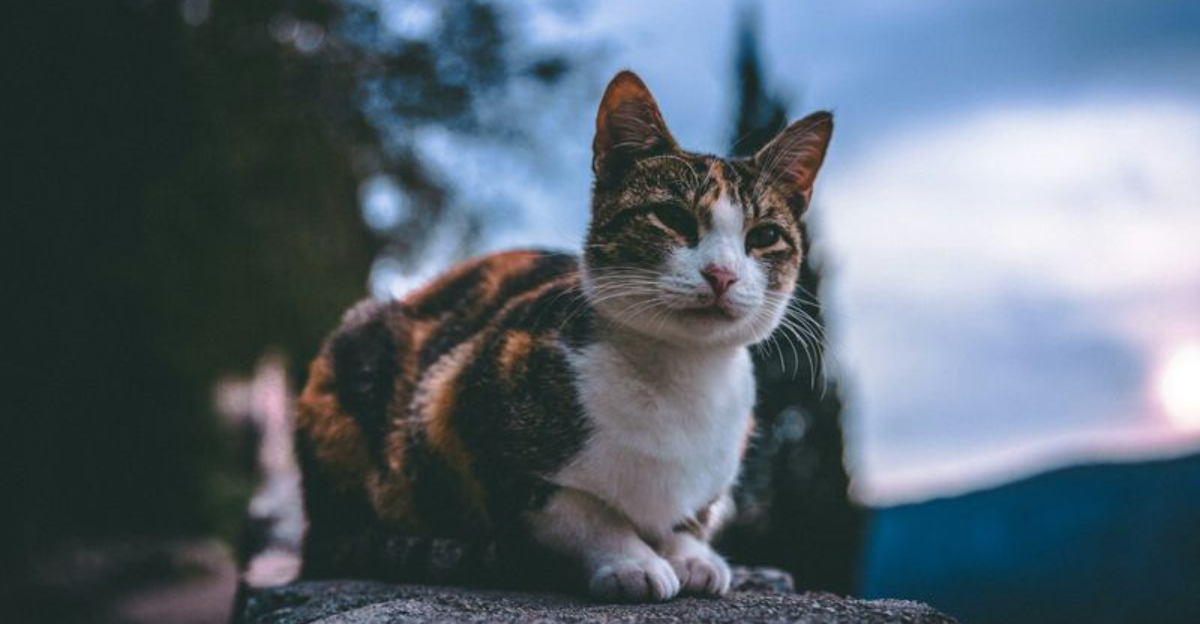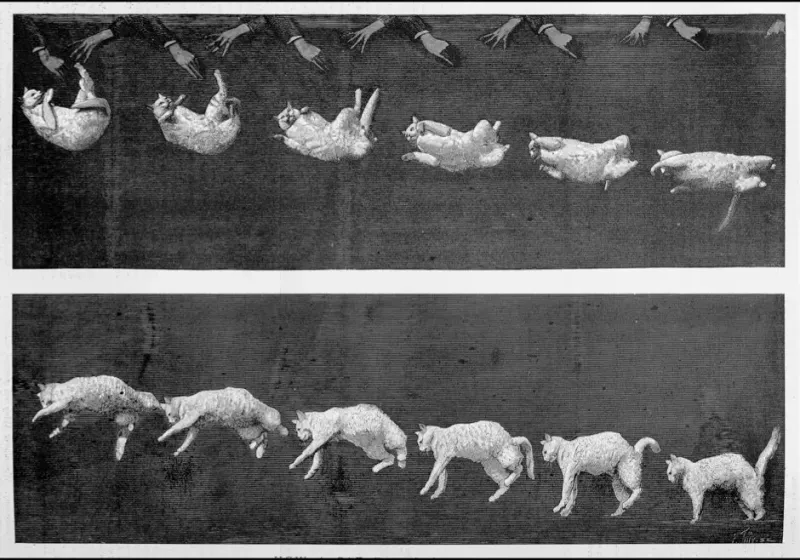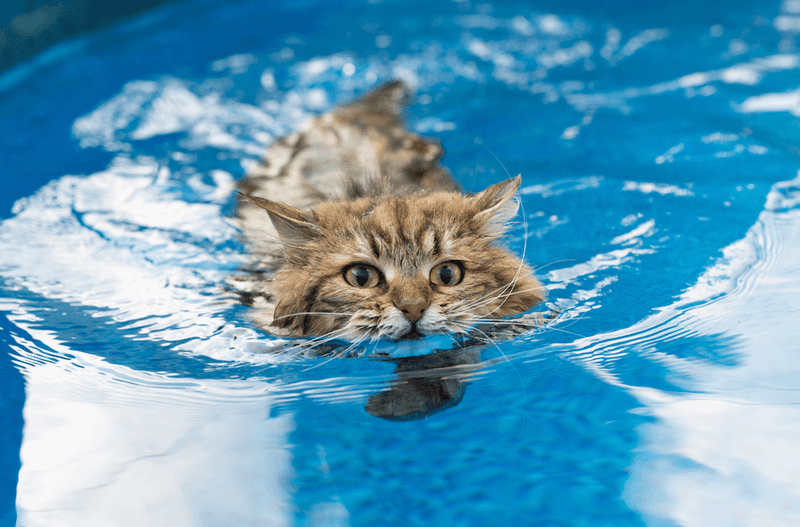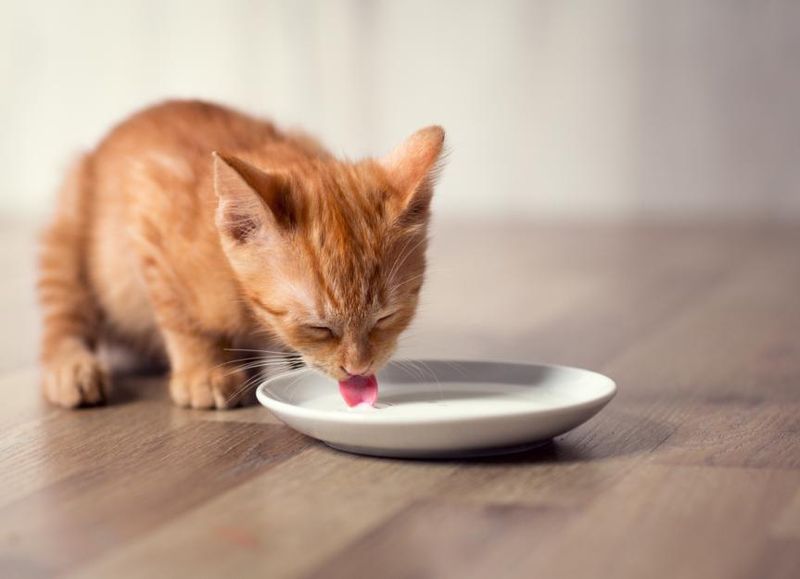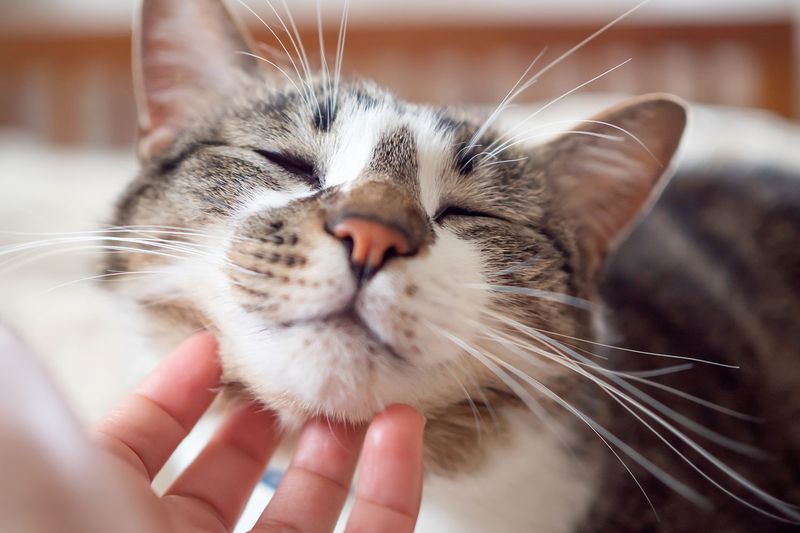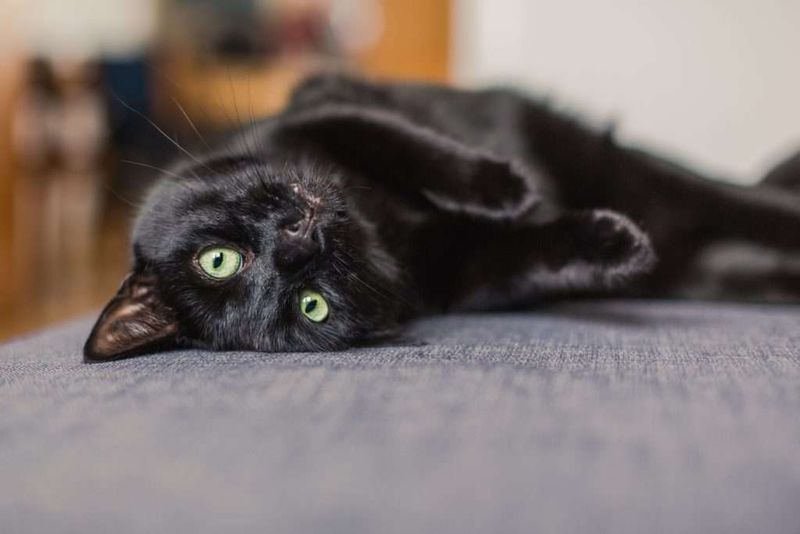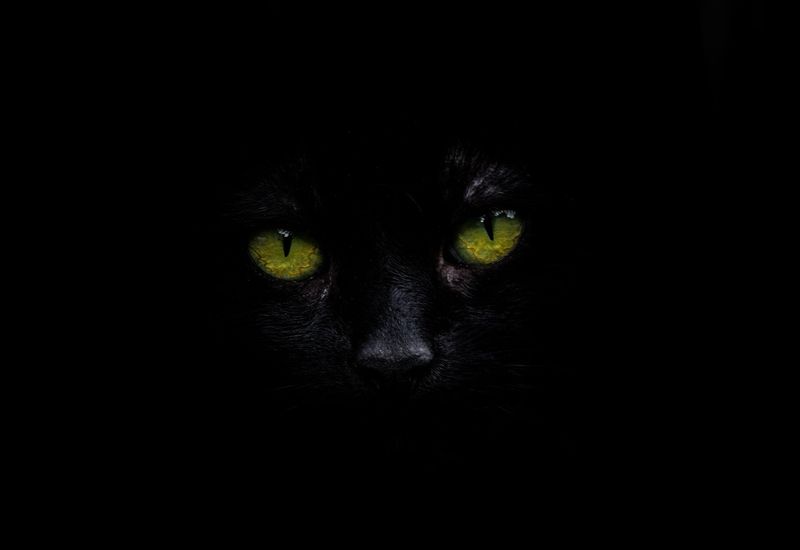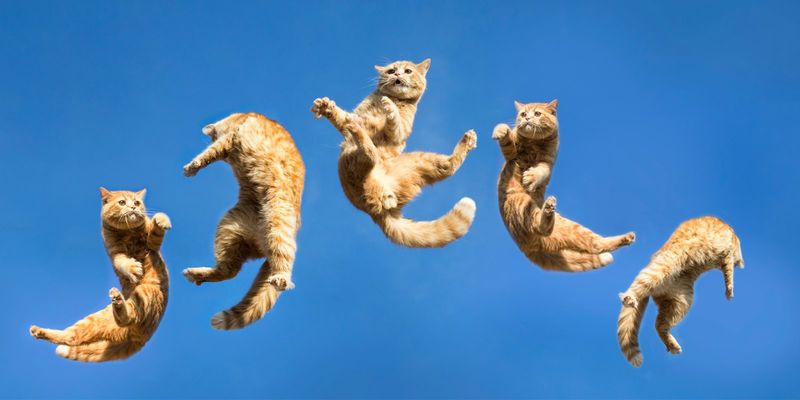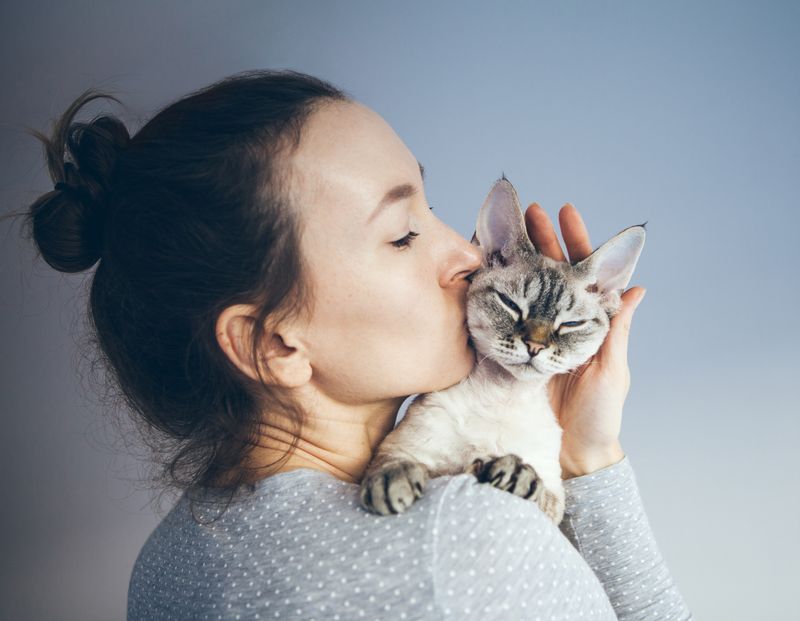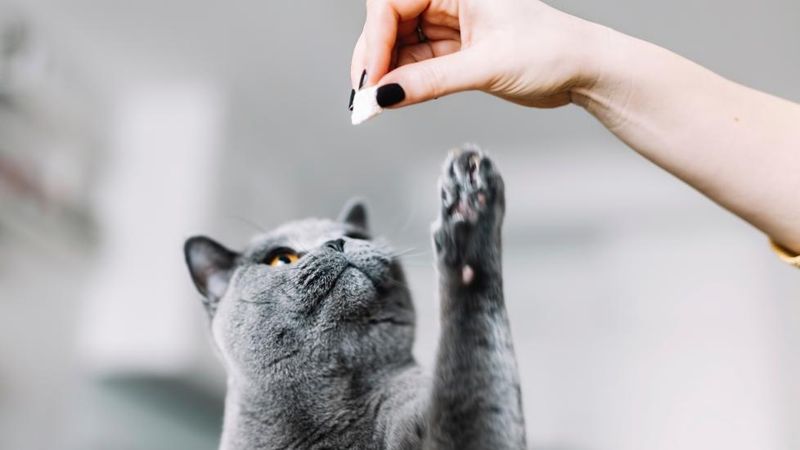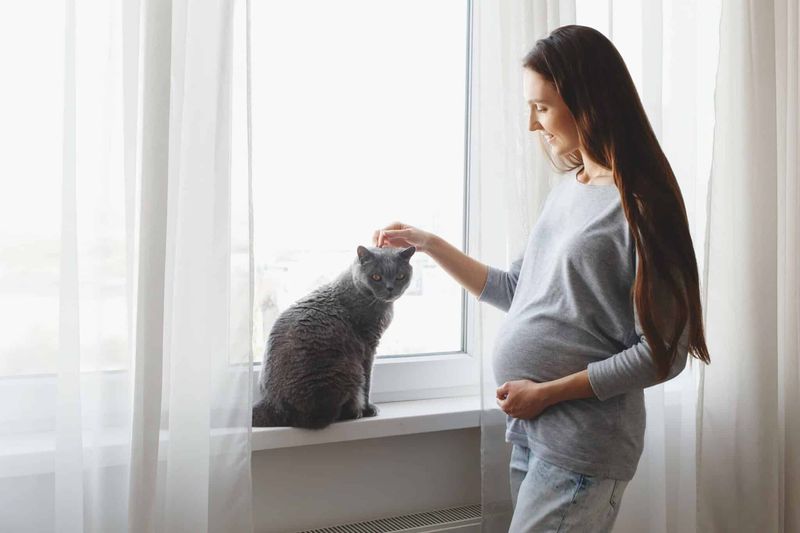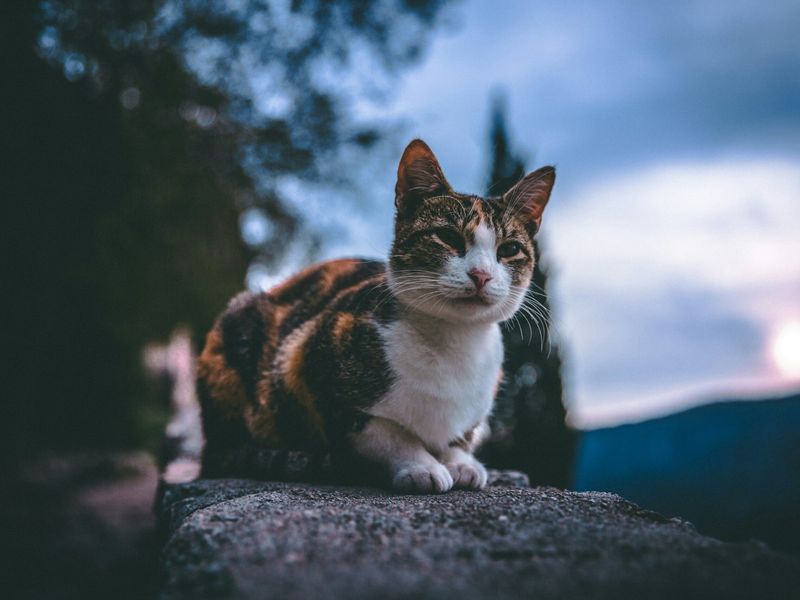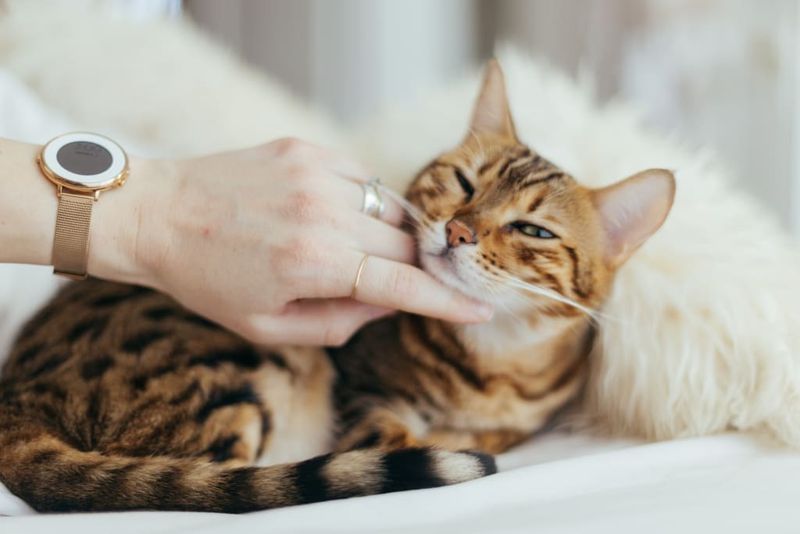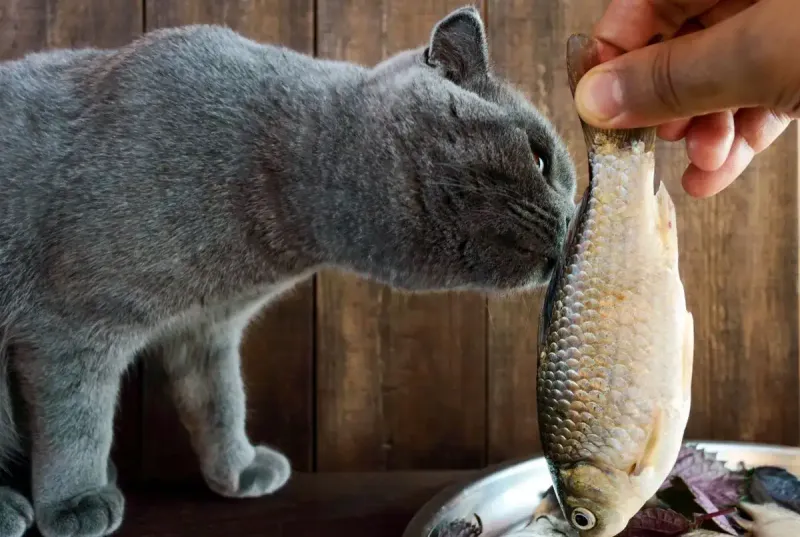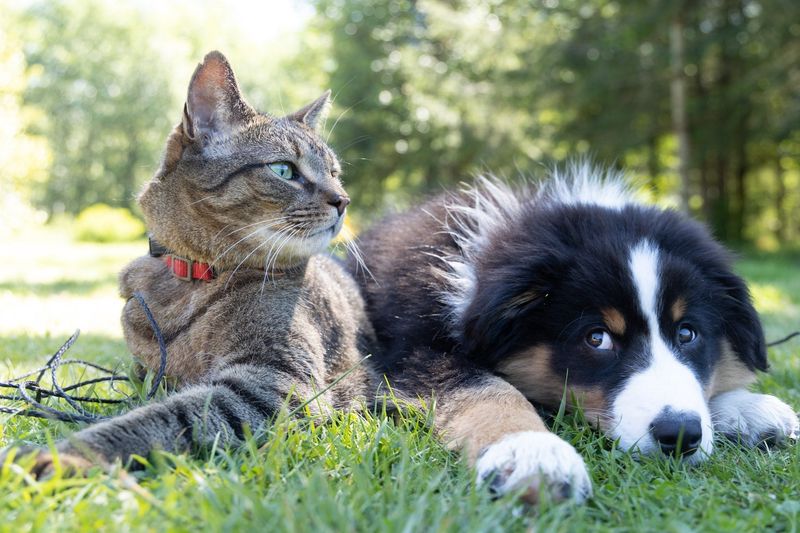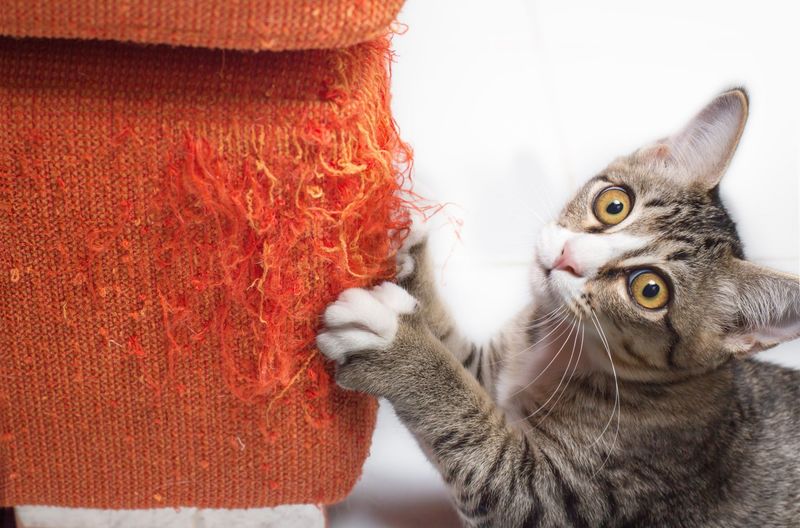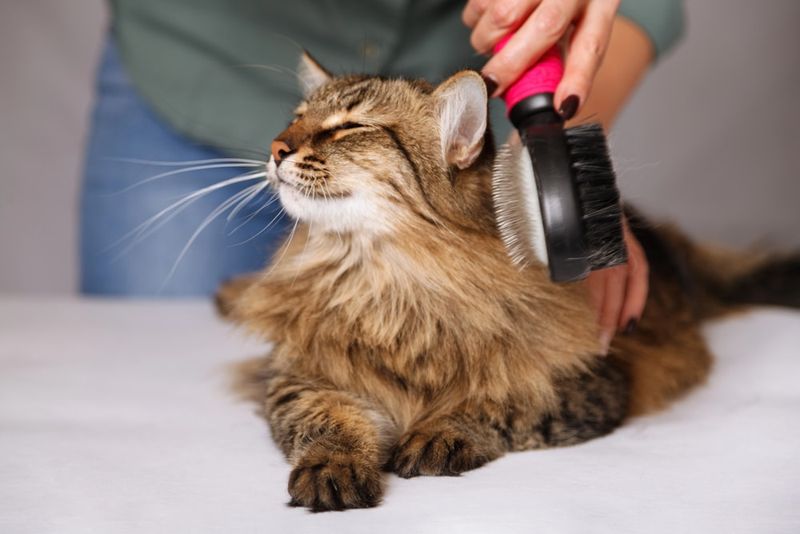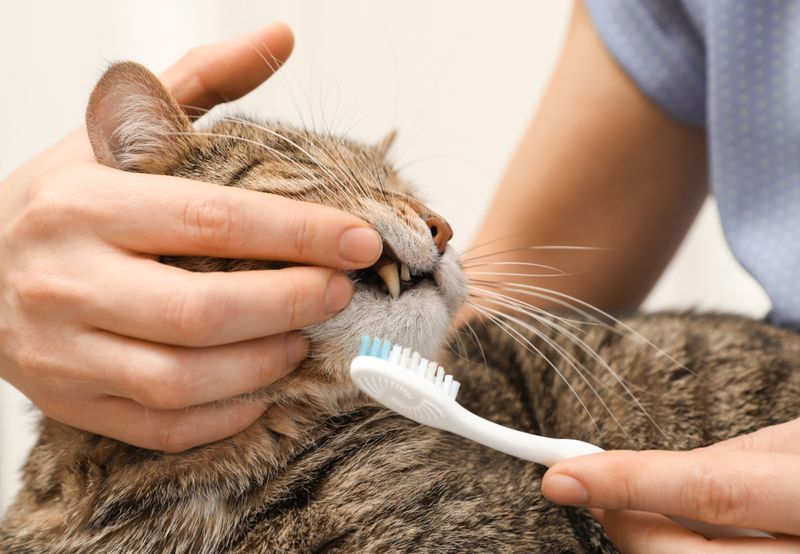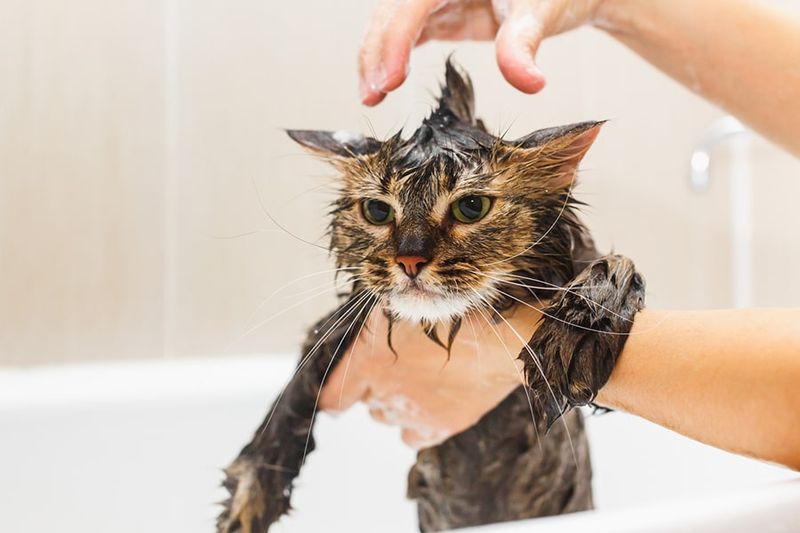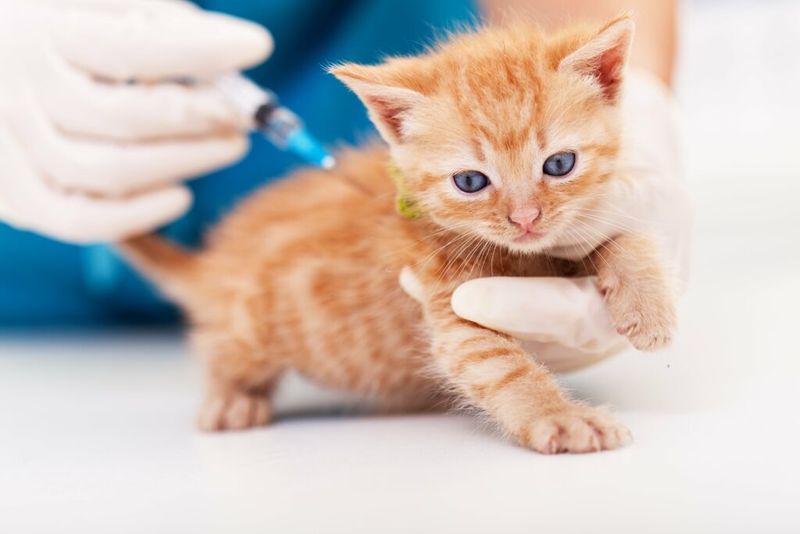📖 Table of Content:
- 1. Cats Always Land on Their Feet
- 2. Cats Hate Water
- 3. Milk is Good for Cats
- 4. Cats Purr Only When Happy
- 5. Black Cats Bring Bad Luck
- 6. Cats Can See in Complete Darkness
- 7. Cats Have Nine Lives
- 8. Cats Are Completely Independent
- 9. Cats Can’t Be Trained
- 10. Pregnant Women Should Avoid Cats
- 11. Cats Are Nocturnal
- 12. Cats Are Mean and Vindictive
- 13. Cats Should Eat Fish
- 14. Cats Always Hate Dogs
- 15. Declawing is Like a Manicure
- 16. Cats Are Low-Maintenance Pets
- 17. Cats Don’t Need Dental Care
- 18. Cats Don’t Need Baths
- 19. Indoor Cats Don’t Need Vaccines
- 20. Cats Can’t Form Deep Bonds With Humans
Cats have been our companions for thousands of years, yet they remain mysterious creatures surrounded by many misconceptions. From their purring habits to their nine lives, myths about our feline friends have been passed down through generations. Let’s set the record straight about these furry companions by busting some of the most common cat myths you might have heard.
1. Cats Always Land on Their Feet
Felines do have an amazing righting reflex that helps them twist mid-air to land on their paws. However, this ability isn’t foolproof. Cats need sufficient height to complete the rotation, and even then, injuries can occur.
Many cats suffer from high-rise syndrome, where they fall from dangerous heights and sustain serious injuries. Their remarkable flexibility and vestibular apparatus in the inner ear contribute to their landing skills, but they’re not invincible.
Always secure windows and balconies to protect your kitty from dangerous falls. Their natural abilities are impressive but have limitations.
2. Cats Hate Water
While most domestic cats avoid swimming pools and bathtubs, not all felines fear water. Turkish Vans, often called “swimming cats,” naturally enjoy paddling around. Maine Coons and Bengal cats frequently show interest in water play too.
The aversion many cats display comes from their desert-dwelling ancestors who rarely encountered large bodies of water. Wet fur also becomes heavy, reducing a cat’s agility and making them feel vulnerable.
Some cats enjoy pawing at dripping faucets or watching toilet water swirl. Each feline has its own personality and preferences when it comes to water interaction.
3. Milk is Good for Cats
Contrary to popular belief, most adult cats are lactose intolerant. After weaning, cats lose the enzyme needed to digest lactose properly. Giving them cow’s milk often leads to digestive upset, diarrhea, and stomach pain.
Kittens naturally drink their mother’s milk, but once weaned, their digestive systems change. The creamy bowl of milk portrayed in cartoons and children’s books actually causes more harm than good for most feline friends.
If your cat seems to enjoy milk, consider specially formulated cat milk from pet stores. These products have reduced lactose content and added nutrients specifically designed for feline digestion.
4. Cats Purr Only When Happy
The gentle rumble of a cat’s purr doesn’t always signal contentment. Cats also purr when injured, frightened, giving birth, or even while dying. The vibrations occur at frequencies between 25 and 150 Hertz, which can promote tissue healing and bone growth.
Scientists believe purring serves multiple purposes, including self-soothing during stressful situations. Mother cats purr while nursing to communicate with kittens, who can feel the vibrations before their ears function fully.
Next time your cat purrs, consider the context. Are they relaxed with half-closed eyes, or showing signs of stress? Understanding your cat’s body language helps interpret what their purr truly means.
5. Black Cats Bring Bad Luck
Throughout history, black cats have faced unfair persecution based on superstition. In medieval Europe, they were associated with witchcraft, leading to widespread fear. This harmful myth continues to impact adoption rates at shelters, where black cats often wait longer for homes.
Interestingly, not all cultures view black cats negatively. In Japan, they symbolize good fortune, while British sailors considered them lucky on ships. Ancient Egyptians revered all cats, including black ones, as sacred animals.
Black cats have the same loving personalities as cats of any other color. Their melanin-rich fur often gives them stronger immune systems and potentially fewer health issues than their lighter-colored counterparts.
6. Cats Can See in Complete Darkness
Feline vision is impressive in low light, but cats cannot see in absolute darkness. Their eyes contain a special reflective layer called the tapetum lucidum, which bounces light back through the retina for a second chance at detection. This creates the eerie glow we see in flash photography.
Cats need just one-sixth the amount of light humans require to navigate their surroundings. Their pupils dilate dramatically in dim conditions, maximizing light collection. They also possess more rod cells for motion detection in their retinas.
Despite these adaptations, cats still need a minimal light source to see. Their exceptional night vision evolved for hunting at dawn and dusk when prey is most active.
7. Cats Have Nine Lives
The myth of cats having nine lives stems from their remarkable survival abilities and agility. Cats can withstand falls from heights that would seriously injure other animals, thanks to their flexible spine and righting reflex.
This legend has roots in ancient cultures. In ancient Egypt, cats were associated with the goddess Bastet and the nine gods of the Ennead. In European folklore, nine was considered a magical number, representing Trinity of Trinities in Christian tradition.
Unfortunately, cats have just one life like any other animal. Their resilience and ability to escape dangerous situations contributed to this enduring myth, but proper care remains essential for their health and longevity.
8. Cats Are Completely Independent
The stereotype of the aloof, self-sufficient cat misrepresents their true social nature. Studies show that cats form genuine attachments to their human caregivers, similar to the bonds between children and parents. Many cats experience separation anxiety when left alone for extended periods.
Feral cat colonies demonstrate natural social structures, with related females often caring for kittens communally. Domestic cats frequently seek interaction, whether through play, grooming, or simply being near their people.
While cats may not show dependency in the same way dogs do, they benefit from social contact and environmental enrichment. Their independence is balanced with genuine need for companionship, creating a relationship that combines autonomy with affection.
9. Cats Can’t Be Trained
Feline intelligence manifests differently from dogs, but cats absolutely can learn through training. Using positive reinforcement techniques, cats readily master tricks, behaviors, and even complex tasks. Clicker training proves particularly effective with their quick minds.
Unlike dogs bred for obedience, cats evolved as solitary hunters with different motivational structures. They respond better to food rewards and play than to verbal praise. Training sessions should be kept short (5-10 minutes) to match their attention spans.
Many cats learn to sit, give high-fives, come when called, and use toilets instead of litter boxes. The key lies in understanding feline psychology and finding rewards that motivate your particular cat.
10. Pregnant Women Should Avoid Cats
The concern about cats and pregnancy centers around toxoplasmosis, a parasitic infection. While pregnant women should exercise caution, complete avoidance of cats is unnecessary. The parasite typically spreads through contact with infected cat feces, not through petting or proximity to cats.
Simple precautions make cat ownership safe during pregnancy. Have someone else clean the litter box daily, or wear gloves if you must do it yourself. Indoor cats who don’t hunt prey have minimal risk of carrying the parasite.
Toxoplasmosis exposure more commonly occurs through gardening in contaminated soil or consuming undercooked meat. With basic hygiene practices, expectant mothers can safely maintain their feline relationships throughout pregnancy.
11. Cats Are Nocturnal
Contrary to popular belief, cats aren’t truly nocturnal but crepuscular—most active during dawn and dusk. This behavior pattern evolved for hunting when prey animals are active but visibility remains sufficient. Their specialized eyes capture maximum light during these transition periods.
Domestic cats often adjust their schedules to match human routines. Many learn to be active when their owners are home and sleep when the house is quiet. This adaptability demonstrates their social flexibility.
If your cat wakes you at 4 AM, try scheduled play sessions before bedtime to burn energy. Automatic feeders can also help by providing early morning meals without human intervention, allowing you to maintain your sleep schedule.
12. Cats Are Mean and Vindictive
The misconception that cats act out of spite misinterprets normal feline behavior. When a cat eliminates outside the litter box or scratches furniture, they’re responding to physical discomfort, stress, or environmental needs—not seeking revenge.
Cats lack the cognitive complexity required for vindictive planning. Their behaviors serve immediate purposes: territory marking, seeking attention, expressing discomfort, or fulfilling natural instincts. What appears as calculated revenge is usually coincidental timing.
Understanding feline communication prevents misattribution of motives. Cats communicate primarily through body language and behavior, not manipulation. By addressing the underlying causes of problematic behaviors rather than assigning human motives, we build healthier relationships with our feline companions.
13. Cats Should Eat Fish
Despite countless cartoon depictions of cats eagerly devouring fish, seafood isn’t actually ideal for feline diets. Wild cats evolved primarily as desert animals, consuming small prey like rodents and birds—not aquatic creatures.
Regular fish consumption can lead to several health issues for cats. Many commercial fish contain thiaminase, an enzyme that destroys vitamin B1, potentially causing neurological problems. Fish-based diets may also contribute to urinary tract problems due to their mineral composition.
While occasional fish treats are generally safe, a balanced diet based on meat proteins better matches cats’ nutritional needs. Their ancestral diet consisted mainly of small mammals, providing the taurine and protein profile best suited for feline health.
14. Cats Always Hate Dogs
The famous “fighting like cats and dogs” stereotype oversimplifies a complex relationship. Many cats and dogs live together harmoniously, especially when introduced properly or raised together from a young age.
Communication differences often cause misunderstandings between species. A wagging tail signals friendliness in dogs but agitation in cats. Similarly, direct eye contact is normal for dogs but threatening to cats. When both animals learn to read each other’s signals, peaceful coexistence becomes possible.
Personality matters more than species in determining compatibility. A calm, well-socialized dog often gets along better with cats than an energetic, high-prey-drive dog, regardless of breed. With proper introductions and management, many cats and dogs form genuine friendships.
15. Declawing is Like a Manicure
Declawing involves amputation of the last bone of each toe—not simply removing the nail. The procedure equates to cutting off human fingers at the last knuckle. This permanent alteration causes both immediate surgical pain and potential long-term complications.
After declawing, cats often develop behavior problems, including litter box avoidance and increased biting. The procedure can cause chronic pain, arthritis, and back issues as cats adjust their walking gait to compensate for missing toe bones.
Many countries and some U.S. states have banned declawing as inhumane. Humane alternatives include regular nail trimming, scratching posts, soft nail caps, and behavior modification. These options preserve natural feline behaviors while protecting furniture.
16. Cats Are Low-Maintenance Pets
The perception of cats as hassle-free pets overlooks their complex care needs. While they may require less direct supervision than dogs, cats need regular veterinary care, dental attention, grooming, environmental enrichment, and social interaction.
Long-haired breeds require frequent brushing to prevent painful mats. All cats benefit from dental care to prevent common periodontal disease. Indoor-only cats particularly need stimulating environments with climbing opportunities, hiding spaces, and interactive toys to prevent boredom and depression.
Cats typically live 15-20 years, representing a significant long-term commitment. Their subtle signs of illness often go unnoticed until conditions become serious, making regular wellness checks crucial. Responsible cat ownership involves consistent time and financial investment throughout their lives.
17. Cats Don’t Need Dental Care
Feline dental health impacts overall well-being more than many owners realize. By age three, most cats show signs of dental disease, which can lead to kidney, liver, and heart problems as bacteria enter the bloodstream through inflamed gums.
Cats rarely show obvious signs of dental pain, having evolved to hide discomfort as a survival mechanism. They often continue eating despite significant mouth pain, making detection difficult without professional examination.
Home dental care ideally includes regular tooth brushing with cat-specific toothpaste. Dental treats, water additives, and prescription diets can supplement—but not replace—mechanical plaque removal. Annual veterinary dental checkups help catch problems early, potentially avoiding painful extractions later.
18. Cats Don’t Need Baths
Cats’ meticulous self-grooming often leads people to believe they never need bathing assistance. While healthy cats maintain basic cleanliness through licking, certain situations require human intervention. Elderly or obese cats frequently struggle to reach all areas, leading to matted fur and skin problems.
Outdoor cats may encounter substances too toxic or stubborn for self-cleaning, like motor oil, skunk spray, or chemicals. Cats with certain medical conditions benefit from medicated baths as part of treatment protocols.
When bathing becomes necessary, preparation makes all the difference. Use lukewarm water, cat-specific shampoo, and create a non-slip surface. Keep sessions brief and positive, following with thorough drying to prevent chilling.
19. Indoor Cats Don’t Need Vaccines
Even strictly indoor cats require core vaccinations for protection against serious diseases. Rabies vaccines are legally mandated in most areas regardless of lifestyle, as the disease poses serious public health risks and is nearly always fatal.
Pathogens can enter homes on shoes, clothing, or through screens. New cats introduced to households might carry diseases despite appearing healthy. Even indoor cats occasionally escape, potentially encountering disease vectors during their adventures.
Veterinarians tailor vaccination protocols based on individual risk factors. While indoor cats may need fewer vaccines than outdoor cats, core protections remain essential. The minimal risks of vaccination are far outweighed by the protection against potentially deadly diseases like panleukopenia, calicivirus, and herpesvirus.
20. Cats Can’t Form Deep Bonds With Humans
Research contradicts the stereotype of cats as emotionally detached pets. Studies using attachment tests similar to those for human infants reveal that cats form secure attachments to their caregivers, showing distress during separation and comfort upon reunion.
Cats express affection differently than dogs, with subtle signals that can be missed by those expecting canine-style enthusiasm. Slow blinking, purring, kneading, bringing “gifts,” and choosing to sleep near you all indicate trust and bonding.
The depth of feline-human relationships varies with individual personality and early socialization. Kittens exposed to positive human interaction during their critical socialization period (2-7 weeks) typically develop stronger human bonds than those with limited early contact.
